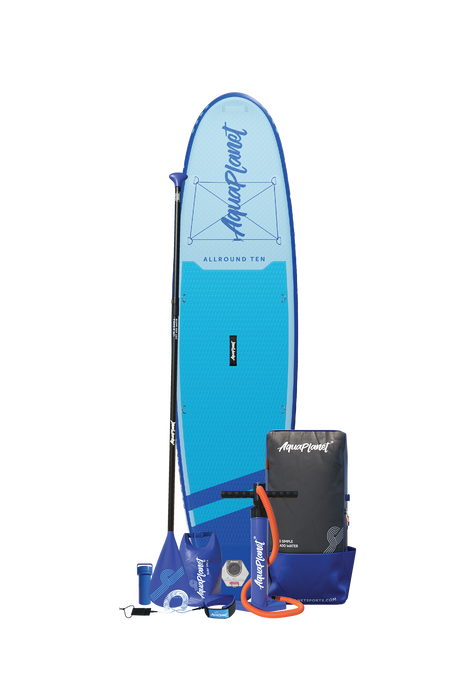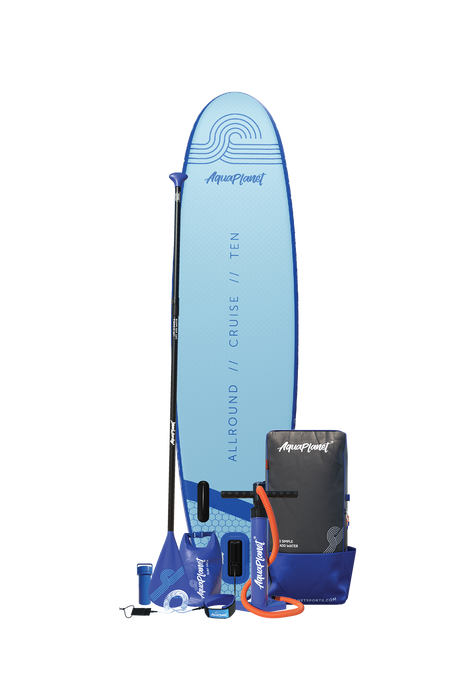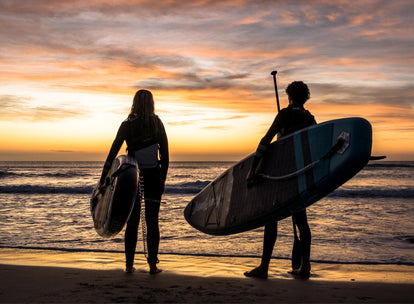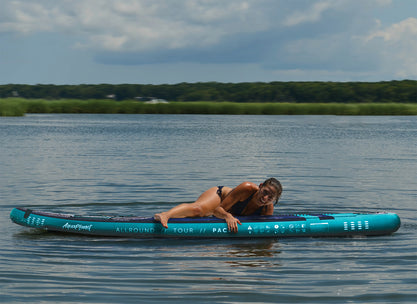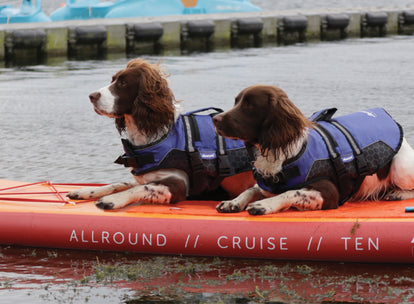Paddle boarding is one of the best ways to enjoy nature, get some exercise and unwind. Whether you are just starting out or have years of experience, safety should always come first. As conditions on the water change and equipment continues to evolve, it's important to stay updated on how to protect yourself.
This is your clear, up-to-date guide to paddle board safety. It’s simple, practical, and designed for paddle boarders of all abilities.
Paddle board safety checklist
No matter where you are paddling, take a moment to check these essentials:

✅ Wear a personal flotation device (PFD)
 The RNLI recommends that all paddle boarders wear one. Choose a vest or waist-style PFD that fits well and allows you to move freely.
The RNLI recommends that all paddle boarders wear one. Choose a vest or waist-style PFD that fits well and allows you to move freely.
✅ Use the correct leash

-
For open water or the sea, use a straight leash.
-
On rivers or anywhere with a current, use a quick-release waist leash instead of an ankle leash. Ankle leashes can be dangerous if they become caught on something underwater.

✅ Carry your phone in a waterproof case
 Keep it in a dry bag or around your waist so you can reach it easily if needed.
Keep it in a dry bag or around your waist so you can reach it easily if needed.
✅ Tell someone your plan
 Share your route and return time with a friend or family member.
Share your route and return time with a friend or family member.
✅ Check the weather, wind, and tide
Use a weather app before heading out. Avoid offshore winds and keep away from stormy or gusty conditions. An incoming tide is generally safer because it brings you back toward land.
✅ Know your limits
 There’s no need to push yourself too far. If you are tired or conditions change, kneel down on your board or return to shore.
There’s no need to push yourself too far. If you are tired or conditions change, kneel down on your board or return to shore.
Safety tips while you are on the water

1. Dress for the water temperature, not the air temperature
Cold water can cause shock, even on a warm day. If the water is under 15°C, wear a wetsuit. In warmer conditions, wear fast-drying, non-cotton layers designed for paddle sports.
2. Stay low in choppy or busy areas
If you are near boats, wind, or waves, kneel on your board to stay stable.
3. Look before launching
Make sure there are no sharp rocks, shallow patches, or debris before stepping onto your board.
4. Make yourself easy to see
Bright clothing or a high-visibility flag will help others spot you. This is especially important in areas with boat traffic or if you are paddling close to dusk.

New to paddle boarding? Start here
Take a beginner lesson. A certified instructor will help you build safe habits from the start.

-
Practice falling off and getting back on. Do this in shallow, calm water before heading out.
-
Stay close to shore. You don’t need to go far to have fun or improve your skills.
Want to learn how to paddle like a pro? Watch our 8 part video course, for FREE

If you are new to paddle boarding or just looking for some extra tips to get even better, then this free video course is ideal for you. We've put all our years of paddle boarding experience into an 8-part video course, designed to get you confidently paddling like a pro in no time, all from the comfort of your own home.
What to do if something goes wrong
If you are blown out by offshore wind:
-
Lie flat on your board to reduce drag
-
Paddle with your arms if needed
-
Call 999 and ask for the Coastguard if you cannot return
If you fall into cold water:
-
Try to stay calm. It is normal to gasp.
-
Float and control your breathing before climbing back onto your board
-
Kneel down and paddle slowly to a safe spot
What’s new in paddle board safety for 2025
 Improved weather tracking apps like Windy and Paddle Logger now send real-time alerts
Improved weather tracking apps like Windy and Paddle Logger now send real-time alerts
-
Quick-release belts are becoming standard even in calm water settings
-
Paddle groups are gaining popularity as a safer and more social way to enjoy the water
Explore with confidence
 At Aquaplanet, we believe your time on the water should be fun and safe. That’s why our boards include reliable leashes, optional kayak kits, and durable designs that support your adventure from day one.
At Aquaplanet, we believe your time on the water should be fun and safe. That’s why our boards include reliable leashes, optional kayak kits, and durable designs that support your adventure from day one.
New to paddle boarding? Visit our Beginner Boards Collection and find the perfect board to start your journey.
Shop All Beginner Paddle Boards
Paddle safe. Paddle smart. Paddle Aquaplanet.


